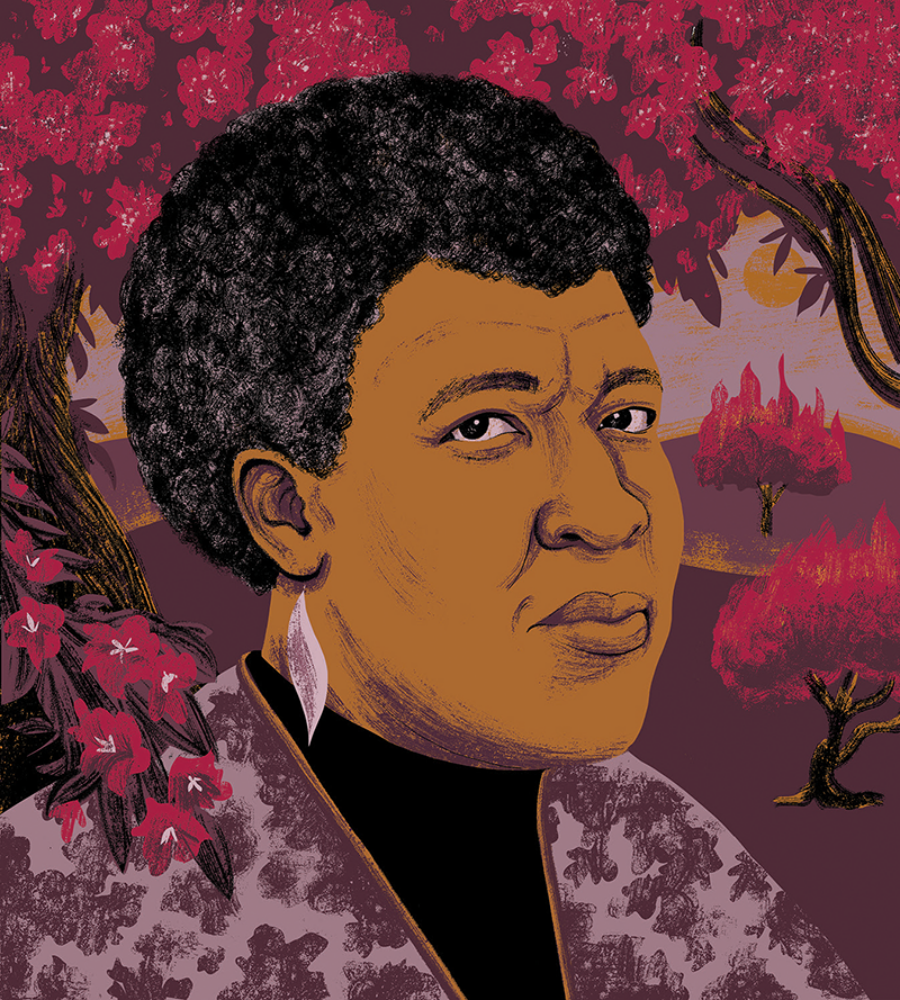
Illustration by Chloe Cushman. Source photograph © Patti Perret
Discussed in this essay:
Octavia E. Butler: Kindred, Fledgling, Collected Stories, by Octavia E. Butler. Edited by Gerry Canavan and Nisi Shawl. Library of America. 789 pages. $35.
A Handful of Earth, A Handful of Sky: The World of Octavia E. Butler, by Lynell George. Angel City Press. 176 pages. $30.
Last September, as the country grappled with a new kind of mass death and seethed after a summer of police brutality and protest, the novel Parable of the Sower (1993) became Octavia E. Butler’s first bestseller. Set in the 2020s, as society collapses under a blowhard…














































































































